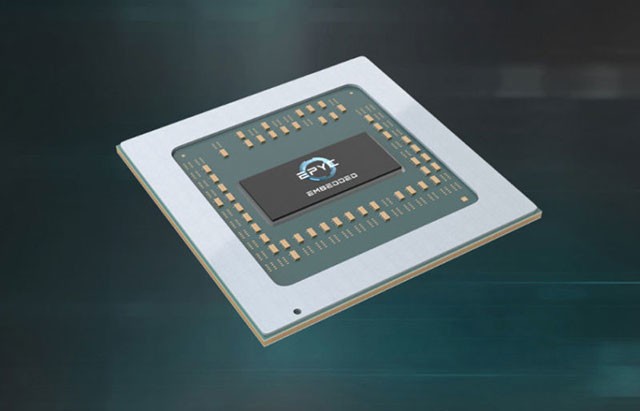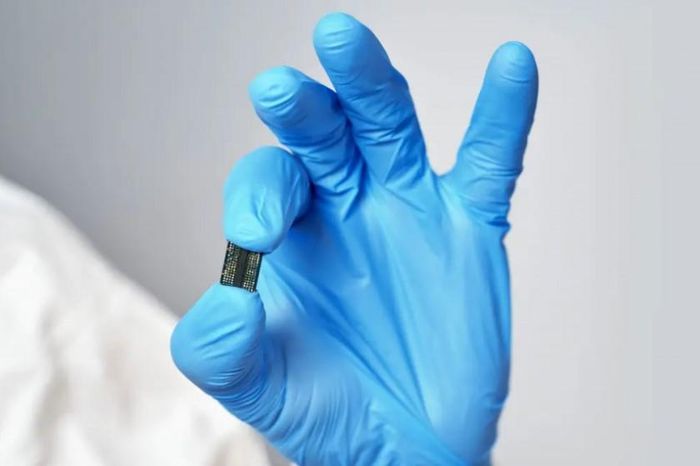China produces x86 chips close to AMD server processors
Thanks to a partnership with AMD and a complex joint venture agreement, Chinese chipmaker Chengdu Haiguang IC Design Co.(Hygon) currently produces x86 server processors very similar to AMD's EPYC processor.In terms of the same design, connecting Linux kernel developers almost does not have to do anything to support the new processor, named Dhyna.
This server chip is only used domestically and is part of an effort to reduce China's dependence on foreign technology companies.
Since Edward Snowden revealed about the US intelligence agency using technology products to gather intelligence abroad, China increasingly puts more pressure on US technology product suppliers. .They hope to develop the domestic technology industry through strict confidentiality regulations and investment in domestic suppliers.
The demand for highly computable server processors also comes from the US limited export to China.In 2015, the Obama administration banned the sale of Intel Xeon processors to China's Tianhe-2 supercomputer due to fears of supporting their nuclear weapons program.
Since then, the sale of processors capable of calculating high prices to China is still limited and the US government does not allow China to buy technology companies due to concerns about national security.
These prohibitions make the Chinese government invest more in domestic microprocessors and also find ways to wriggle through prohibitions with cooperation and joint ventures.Suzhou PowerCore Technology Co.buy IBM Power8 architecture license from 2015;Zhaoxin, a state-owned technology company, designs x86 domestic processors through joint ventures with VIA.Now, copyright cooperation with AMD - both promotes licensing and joint venture, allows the use of x86's intellectual property - the first steps in creating an instant server platform. domestic.

The chip that closely resembles AMD's EPYC processor has appeared in China
Based on the AMD core architecture of AMD and EPYC, Dhyana processors currently focus on embedded applications.They are not pin-processor microprocessors but have AMD's SoC design, like the EPYC embedded microprocessor processor.However, they are so similar that according to Phoronix's Michael Larabel, transcoding Linux kernel from EPYC processor to Hygon's chip requires less than 200 new lines of code.
The SoC design also does not exclude the use of Dhyana microprocessors on group applications that require high computational capabilities or data center applications (if not for trade restrictions), often due to Intel Xeon or microprocessors. Other server processing done.
Looking at China's efforts with the information technology industry, despite US restrictions, embedded server technology will probably also meet domestic demand.
The good news for AMD is that the joint venture still gives them profits, plus the $ 239 million they received in 2016 from Tianjin Haiguang Advanced Technology Investment Co.(THATIC), a division specializing in investment of Chinese Academy of Sciences.
No matter how current Washington and Beijing relations are, it is uncertain how long this relationship will last.But surely the profits will go along with national security concerns.
See more:
- [Infographic] Pony Ma Life - From an astronomical person to Chinese technology magnate
- China Mobile plans to deploy 5 5G cities in China
- US intelligence recommends against using Huawei and ZTE phones
You should read it
- The Chinese government will replace the entire current Windows computer system for security reasons
- Translate Vietnamese name into Chinese name
- Things to know when buying Chinese technology items
- Chinese alphabet and standard pronunciation
- How to install Chinese keyboard on Windows 7, 10
- Glowing silicon: The key to big strides in the semiconductor industry
- Apple is in talks with Chinese companies to supply memory chips for the iPhone
- Typing Chinese on a computer
May be interested
- Intel introduces a new series of H-series chips for laptops, clocking beyond 5.0GHz
 a commendable effort for intel when its new series of chips still use the 14nm process but have a very high clock speed.
a commendable effort for intel when its new series of chips still use the 14nm process but have a very high clock speed. - Apple surpassed Intel because Intel just sat there
 so it is understandable that apple abandons intel chips behind.
so it is understandable that apple abandons intel chips behind. - What are chips, chipsets, and processors? What role do they play in the computer system?
 what are chips, chipsets, and processors? what role do they play in the computer system? on a computer motherboard is the appearance of a lot of different components and components. the work of the motherboard on a computer system is linked
what are chips, chipsets, and processors? what role do they play in the computer system? on a computer motherboard is the appearance of a lot of different components and components. the work of the motherboard on a computer system is linked - The US may place a series of limits on Korean semiconductor chips made in China
 china's ambition to dominate the semiconductor industry in the past few years has made the united states unable to sit idly by.
china's ambition to dominate the semiconductor industry in the past few years has made the united states unable to sit idly by. - New invention: China launches outstanding energy-saving chip
 in a promising new step for the technology industry, a research team at the university of electronic science and technology of china (uetc) has succeeded in developing two types of super-efficient artificial intelligence (ai) chips. save energy.
in a promising new step for the technology industry, a research team at the university of electronic science and technology of china (uetc) has succeeded in developing two types of super-efficient artificial intelligence (ai) chips. save energy. - Huawei surpassed Qualcomm, becoming China's number one chip supplier
 this is the first time that hisilicon, huawei's semiconductor design unit, surpassed qualcomm in the number of products supplied to the chinese market in the first quarter of this year.
this is the first time that hisilicon, huawei's semiconductor design unit, surpassed qualcomm in the number of products supplied to the chinese market in the first quarter of this year. - Intel's 9th generation chip shows a new path, no need to follow Moore's law
 the more cores the better, not moore's law.
the more cores the better, not moore's law. - Macbook will probably use AMD chips
 the delay in offering intel core i5 / i7 processors to upgrade to the recent macbook pro series has made the apple 'quite annoying'.
the delay in offering intel core i5 / i7 processors to upgrade to the recent macbook pro series has made the apple 'quite annoying'. - Apple is about to launch 3 Macs using its own chip
 bloomberg reported that apple is planning to bring its own refiners into at least three new macs later this year.
bloomberg reported that apple is planning to bring its own refiners into at least three new macs later this year. - The Chinese government stopped licensing the distribution of video games, approximately 14,000 game businesses had to close
 china's game industry is stagnant, while large corporations have to find ways to reach abroad.
china's game industry is stagnant, while large corporations have to find ways to reach abroad.









 While the world waited for 5G to appear, Telefonica introduced LTE 1Gbps on Samsung Galaxy S9
While the world waited for 5G to appear, Telefonica introduced LTE 1Gbps on Samsung Galaxy S9 Microsoft Teams - the competing chat application with Slack has a free version
Microsoft Teams - the competing chat application with Slack has a free version Instagram allows you to remove your followers if you find them annoying
Instagram allows you to remove your followers if you find them annoying It is possible to install the Chrome utility directly to Opera
It is possible to install the Chrome utility directly to Opera LPDDR5 8GB DRAM memory chip first for smartphones with a speed of 6,400 Mb / s
LPDDR5 8GB DRAM memory chip first for smartphones with a speed of 6,400 Mb / s What is the newly announced WPA3 WiFi security protocol?
What is the newly announced WPA3 WiFi security protocol?